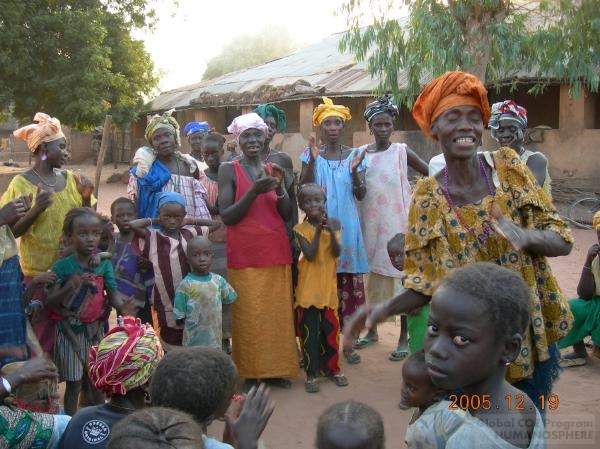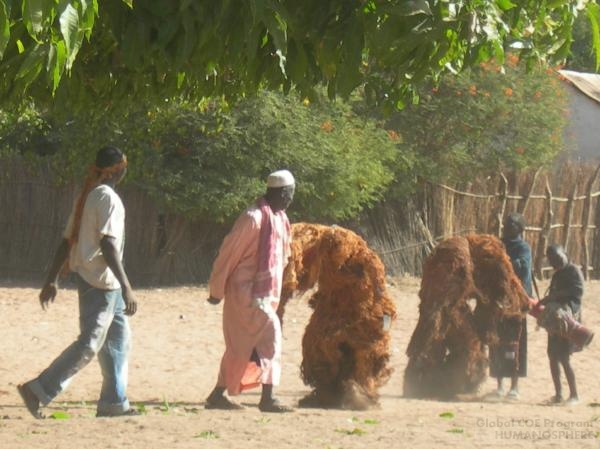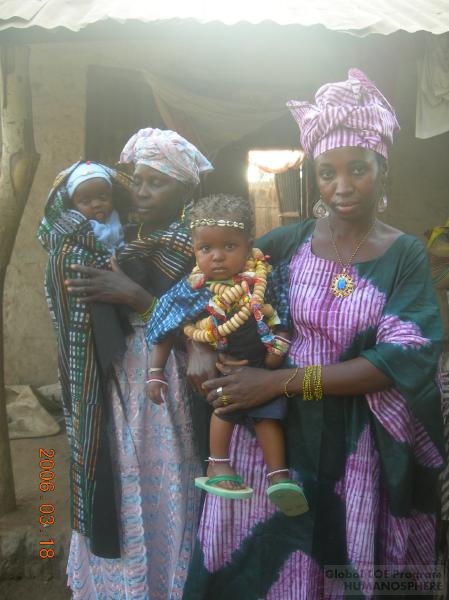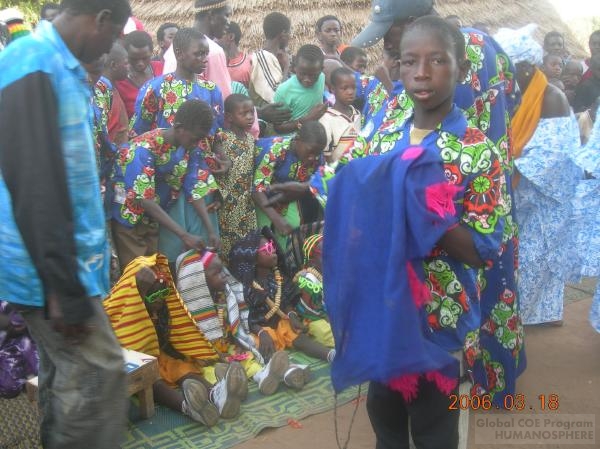"The Day the Men Take the Lead"Yumiko KATAYAMA(Cameroon Field Column)
(Division of African Area Studies, Graduate School of Asian and African Area Studies)
On days of special significance, the beating of tam-tam drums echoes throughout the village. A child’s naming or a wedding ceremony, the feast of breaking the fast or the ceremonial sacrifice of a sheep, at planting time and harvest, at any happy occasion the tam-tams are in attendance. Tam-tams themselves are generally performed by three men beating separate rhythms that resound together as one. It is a special instrument and the right to play it restricted to those born into the lineage of family of griot tam-tam performers. When the women take part in farm work in groups, women tam-tam performers also make an appearance. Drooping in the heat, legs and backs aching from the heavy farm labor, these workers in the paddy fields find in the sound of the tam-tam a momentary, heavenly escape. The working women’s hips catch and swing with the drum’s sound, and during a break, they form a circle in the field, stamping their feet. On the road home, they raise their voices in song along with the beat of the drum, and with their arrival into the village their children join in for an impromptu celebration in dance.
Men’s work in the fields is not associated with any such activities. Adolescents might play cassettes of recent popular music or listen to the radio while they’re working, but in comparison to the paddies which ring with women’s voices, the fields of the men remain silent. Whether in the fields or in the village, it’s the women who surround the drums and monopolize their energy.
Such men do have a day when they can take back center stage, however, in the time of the circumcision. Usually in the villages, boy and girl alike have been circumcised by the age of ten. The ceremony related to this practice is said to have faded in recent years, but still today boys will pass a month within the forest, have their circumcision, and receive the necessary teachings to become adult men. On the day that a boy leaves his home to be circumcised, the town fills with the sound of the tam-tams and the brown-clothed circumcised adult male guardians called kankurang. Women and uncircumcised children who believe the sight of the kankurang is deadly, scramble quickly into their homes at the kankurang’s appearance. They have a terrible yell, and in the time the children spend away preparing for their circumcision a high, piercing “Aaaaaah” can be heard in the middle of the night from the depths of the forest, becoming gradually louder and approaching even so close as the doors of the homes where the others should be sleeping. This call can be heard even when there is no particular ceremony being held, sometimes even in broad daylight. At such times the women have no choice but to stop what they’re doing in the fields and race back to the village.
Once the ceremony of circumcision is complete, it is time for the children’s debut, decked out with a traditional cloth placed over their heads, their necks adorned with necklaces made of candy wrappers and biscuits, and with sunglasses covering their eyes for some reasons. On this day too, of course, men are in the main. Circumcised girl children are forced out to the edges while the boys take up their center-row positions. The adolescent boys and the kankurang begin to roam around the village in the morning, and by noon the males all come to gather around the tam-tams. The men’s dance differs in style from that of women and is altogether replete with forceful power. In keeping with the strength of the men’s dancing, the tam-tam’s sound beats out all the stronger, and the women’s shrill voices fly out joyous across the village.
Even on days like this, when the men are supposed to take center stage, in the end it is the women who crown around the tam-tams.



